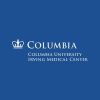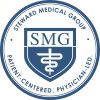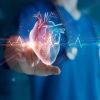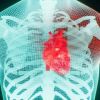- understanding-heart-attack-and-heart-disease
- key-signs-of-a-heart-attack
- common-symptoms-of-heart-disease
- differences-between-heart-attack-and-heart-disease
- real-life-case-studies
- when-to-seek-medical-help
- preventative-measures-for-heart-health
Understanding Heart Attack and Heart Disease
Heart health is a critical topic for millions, especially in the United States where cardiovascular diseases remain the leading cause of death. Two terms often used interchangeably but representing different conditions are heart attack and heart disease. Understanding the distinction is vital in recognizing their signs promptly and taking action.
A heart attack, medically known as myocardial infarction, occurs when blood flow to a part of the heart muscle is blocked, causing tissue damage. On the other hand, heart disease refers to a broader range of conditions affecting the heart’s structure and function, including coronary artery disease, arrhythmias, and heart failure. Both share some symptoms but differ significantly in onset, severity, and management.

Key Signs of a Heart Attack
Recognizing a heart attack early can save lives. The most common signs include intense chest pain or discomfort, often described as pressure, squeezing, or fullness. This pain may radiate to the arms, neck, jaw, or back. Shortness of breath, cold sweats, nausea, and lightheadedness often accompany the chest discomfort.
Unlike occasional chest pain from indigestion or anxiety, heart attack symptoms tend to persist and worsen over several minutes. It's important to note that women, seniors, and diabetics might experience atypical symptoms such as fatigue, nausea, or pain in the back or jaw without classic chest pain. Immediate medical attention is crucial at any suspicion.
Atlanta Heart Specialists
atlanta heart specialists
4375 Johns Creek Pkwy #350, Suwanee, GA 30024, USA

Common Symptoms of Heart Disease
Heart disease symptoms can vary widely depending on the specific condition. Coronary artery disease, the most common form, may cause angina — chest pain during exertion or stress that subsides with rest. Other symptoms include shortness of breath, palpitations, dizziness, or swelling in the legs and ankles indicating heart failure.
Unlike heart attacks, heart disease symptoms often develop gradually and may be manageable with lifestyle changes and medication. However, ignoring these signs can lead to severe complications, including heart attacks and stroke.
Differences Between Heart Attack and Heart Disease Symptoms
While heart attacks and heart disease share overlapping symptoms, their differences lie in urgency and presentation. A heart attack is an acute emergency characterized by sudden and severe symptoms. In contrast, heart disease symptoms usually manifest gradually and may be intermittent.
For instance, chest pain from heart disease often occurs predictably with physical exertion and eases with rest, whereas heart attack pain is sudden, intense, and unrelenting. Awareness of these nuances is essential for timely diagnosis and treatment.
Real-Life Case Studies Highlighting Symptom Recognition
Consider the story of John, a 55-year-old man who dismissed mild chest discomfort during his morning walk as indigestion. Days later, he experienced a full-blown heart attack requiring emergency intervention. In contrast, Susan, a 60-year-old with diagnosed coronary artery disease, managed her angina symptoms through medication and lifestyle adjustments, preventing heart attacks.
These cases illustrate the importance of understanding signs of heart attack vs heart disease symptoms, reinforcing the need for awareness and proactive health management.
When to Seek Medical Help
Immediate medical help is imperative if you experience symptoms indicative of a heart attack. Calling emergency services rather than driving yourself is the safest choice. For ongoing heart disease symptoms, regular consultations with a cardiologist enable effective management and risk reduction.
Ignoring symptoms or delaying treatment can have fatal consequences, underscoring the necessity of education and vigilance regarding heart health.
Preventative Measures for Heart Health
Prevention remains the best strategy against heart disease and heart attacks. Adopting a heart-healthy lifestyle—balanced diet, regular exercise, stress management, quitting smoking, and controlling blood pressure and cholesterol—is fundamental.
Regular health screenings and early intervention upon noticing symptoms can improve outcomes dramatically. For more guidance, resources, and heart health products, visit HeartCare Hub, where you can find tailored support and expert advice to safeguard your cardiovascular wellness.





















Deborah Heart and Lung Center
deborah heart and lung center
200 Trenton Rd, Browns Mills, NJ 08015, USA